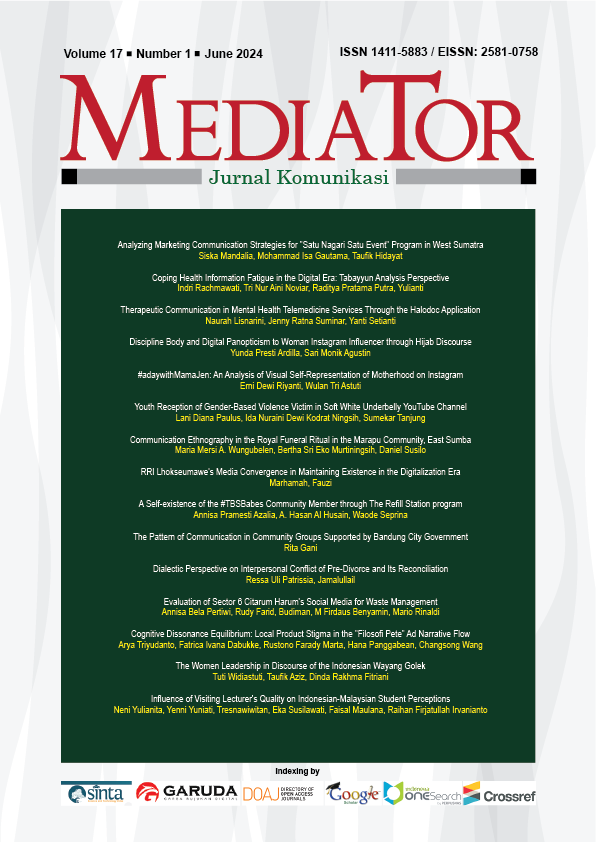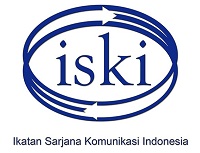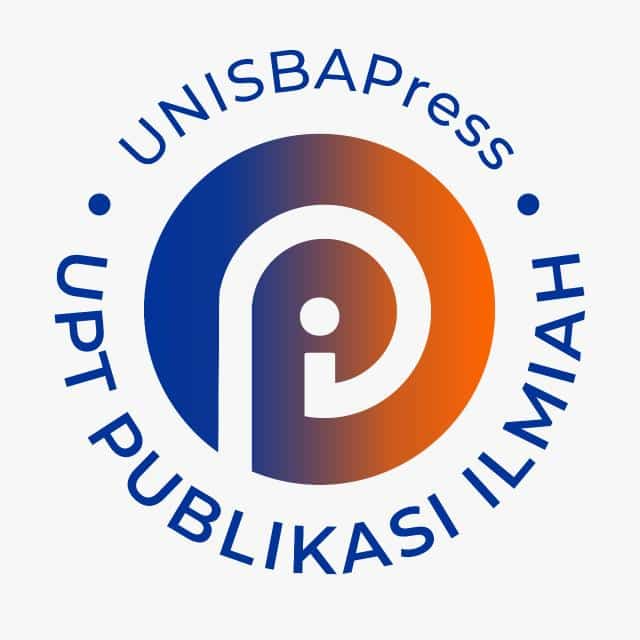The Pattern of Communication in Community Groups Supported by Bandung City Government
DOI:
https://doi.org/10.29313/mediator.v17i1.3313Keywords:
media communication, group communication, community empowermentAbstract
The argument that the media influences our behavior both directly and indirectly is indeed a significant concern for mass media "connoisseurs." The Internet, in particular, is a powerful medium that provides a vast array of information. The use of the internet, whether through websites, social media, or other platforms, follows a basic concept of openness, allowing various types of information to be shared by and with many people. The position of the Kelompok Informasi Masyarakat (hereinafter referred to as KIM) was confirmed based on the Minister of Communication and Information Regulation Number 8 of 2010 concerning the Development and Empowerment of Social Communication Institutions. It is a Community Information Group formed by the community, from the community and for the community, independently and creatively managing information and community empowerment to enhance added value. As a form of community empowerment, the existence of KIM is an alternative solution for raising awareness about the importance of group dynamics, especially in information exchange and fostering partnerships with various government agencies at the district and city levels. This case was analyzed using the theories of group communication, communication ethics, and communication media, which are integral to understanding the communication patterns within KIM.
References
Abdussamad, H. Z., & Sik, M. S. (2021). Metode penelitian kualitatif. CV. Syakir Media Press.
Ardianto, E. (2016). Metodologi Penelitian Untuk Public Relations. Simbiosa Rekatama Media.
Arikunto, S. (2010). Manajemen Penelitian, PT. Rineka Cipta, Jakarta.
Arikunto, S. (2014). Prosedur Penelitian Suatu Pendekatan Praktek. PT. Rineka Cipta.
Desi, F. (2006). Etika Organisasi Pemerintahan. Jakarta: LAN Lembaga Administrasi Negara Republik Indonesia.
Diskominfo. (2018). Selayang Pandang KIM Kota Bandung. Diskominfo.
Dwivedi, Y. K., Ismagilova, E., Hughes, D. L., Carlson, J., Filieri, R., Jacobson, J., Jain, V., Karjaluoto, H., Kefi, H., & Krishen, A. S. (2021). Setting the future of digital and social media marketing research: Perspectives and research propositions. International Journal of Information Management, 59, 102168. https://doi.org/10.1016/j.ijinfomgt.2020.102168
Fachruddin, A. (2019). Journalism today. Kencana.
Farida, U., & Qabandiya, M. K. (2022). Community Empowerment Program in Indonesia. Journal of Indonesian Scholars for Social Research, 2(2), 186–193. https://doi.org/10.59065/jissr.v2i2.46
Friedman, L. W., & Friedman, H. H. (2008). The new media technologies: Overview and research framework. Available at SSRN 1116771. https://doi.org/10.2139/ssrn.1116771
Gudykunst, W. B. (2003). Cross-cultural and intercultural communication. Sage.
Ibrahim, I., & Samsiah, S. (2022). FUNGSI MEDIA MASSA BAGI MASYARAKAT DI DESA MOIBAKEN (Studi Fungsi Dan Media Massa Di Masyarakat Desa Moibaken). Copi Susu: Jurnal Komunikasi, Politik & Sosiologi, 4(1), 38–49.
IRWAN, I., & PURNAMASARI, J. (2022). PERANAN KOMUNIKASI MASSA DALAM PENYAMPAIAN INFORMASI PADA MASYARAKAT KAMPUNG ADOKI DISTRIK YENDIDORI KABUPATEN BIAK NUMFOR. Copi Susu: Jurnal Komunikasi, Politik & Sosiologi, 4(1), 50–55.
Jalaluddin rakhmat, idi subandy ibrahim. (2017). Metode Penelitian Komunikasi. Simbiosa Rekatama Media.
Kasiyanto, K. (2016). Implementasi Kebijakan Kelompok Informasi Masyarakat (KIM) Daerah Tertinggal di Jawa Timur dalam Penyebarluasan Informasi. Jurnal Komunika: Jurnal Komunikasi, Media Dan Informatika, 5(2), 101–110.
Kasuatik, nasution, I. (2015). Peranan Kelompok Informasi Masyarakat dalam Mewujudkan Desa Mandiri di Deli Serdang. Jurnal Ilmu Pemerintahan Dan Sosial Politik, 3(2), 103–115. http://ojs.uma.ac.id/index.php/jppuma
Khatimah, H. (2018). Posisi dan peran media dalam kehidupan masyarakat. Tasamuh, 16(1), 119–138.
Kraus, S., Jones, P., Kailer, N., Weinmann, A., Chaparro-Banegas, N., & Roig-Tierno, N. (2021). Digital transformation: An overview of the current state of the art of research. Sage Open, 11(3), 21582440211047576. https://doi.org/10.1177/21582440211047576
Laksono, B. A. (2018). The Community Empowerment Through Social and Educational Institutions. Jurnal Pendidikan Humaniora, 6(3), 115–122.
Malta. (2023). The Concept of Strategy in Community Empowerment: A Literature Review. Influence: International Journal of Science Review, 5(3), 24–34. https://doi.org/10.54783/influencejournal.v5i3.179
Mustafa, M. Z., Rahim, N. R. A., Ariffin, M. Y. M., Yusoff, S. H., Triwandi, I. J., & Gani, R. (2021). Local Content on Instagram as Public Campaign Media of Majlis Bandaraya Seremban, Negeri Sembilan, Malaysia and Bandung City Government, Bandung, Indonesia. Ulum Islamiyyah, 33(S5), 49–75.
Nasrullah, R. (2016). Media sosial, Perspektif Komunikasi, Budaya, dan Sosioteknologi. Simbiosa Rekatama Media.
Nurhanifah, N., Nasution, M. Y. H., & Ardiansyah, A. (2022). Sistem Komunikasi Kelompok. Jurnal Guru Kita PGSD, 6(2), 149. https://doi.org/10.24114/jgk.v6i2.31988
Permana, R. S. M., & Mahameruaji, J. N. (2019). Strategi pemanfaatan media baru NET. TV. Jurnal Studi Komunikasi Dan Media, 23(1), 21–36. https://doi.org/10.31445/jskm.2019.1770
Purworini, D., Chasana, R. R. B., Palupi, P., Setyawan, S., Triyono, A., & Yuwono, I. T. (2023). The Role of Community Empowerment in the Development of a Marketing Communication Strategy for Kembang Kuning Tourism Village. ASEAN Journal of Community Engagement, 7(1), 113–126. https://doi.org/https://doi.org/10.7454/ajce.v7i7.1193
Razmerita, L., Kirchner, K., & Nabeth, T. (2014). Social media in organizations: leveraging personal and collective knowledge processes. Journal of Organizational Computing and Electronic Commerce, 24(1), 74–93. https://doi.org/10.1080/10919392.2014.866504
Romli, A. S. M. (2018). Jurnalistik online: Panduan mengelola media online. Nuansa Cendekia.
Safko, L., & Brake, D. K. (2009). The social media bible: tactics, tools, and strategies for business success. John Wiley & Sons.
Setiadi, M. B., & Pradana, G. W. (2022). Pemberdayaan Masyarakat Berbasis Potensi Lokal Melalui Program Desa Wisata Genilangit (Studi di Desa Wisata Genilangit Kecamatan Poncol Kabupaten Magetan). Publika, 881–894.
Sitinjak, I. Y., Gultom, S., & Nita, R. J. (2022). PENGARUH MEDIA MASSA (TELEVISI DAN SURAT KABAR) TERHADAP PERILAKU SISWA KELAS VIII MTs AL-HURRIYAH PANEI TONGAH. Jurnal Moralita: Jurnal Pendidikan Pancasila Dan Kewarganegaraan, 3(2), 101–114.
Sudarmanto, E., Revida, E., Zaman, N., Simarmata, M. M. T., Purba, S., Syafrizal, S., Bachtiar, E., Faried, A. I., Nasrullah, N., & Marzuki, I. (2020). Konsep Dasar Pengabdian Kepada Masyarakat: Pembangunan dan Pemberdayaan. Yayasan Kita Menulis.
Sugiyono. (2020). Metode Penelitian Kuantitatif, Kualitatif dan R&D. Bandung : Alfabeta.
Wasistiono, S. (2019). Sejarah, Kedudukan, Serta Prospek Perangkat Desa Di Indonesia. Jurnal Ilmiah Wahana Bhakti Praja, 9(1), 1–16.
Widjajanto, K. (2013). Perencanaan komunikasi: konsep dan aplikasi. Bandung: Ultimus.
Zacharias, T., Rahawarin, M. A., & Yusriadi, Y. (2021). Cultural reconstruction and organization environment for employee performance. Journal of Ethnic and Cultural Studies, 8(2), 296–315.
Závadská, Z., & Závadský, J. (2020). Quality managers and their future technological expectations related to Industry 4.0. Total Quality Management & Business Excellence, 31(7–8), 717–741. https://doi.org/https://doi.org/10.1080/14783363.2018.1444474
Downloads
Published
Issue
Section
License
Copyright (c) 2024 Rita Gani

This work is licensed under a Creative Commons Attribution-ShareAlike 4.0 International License.























